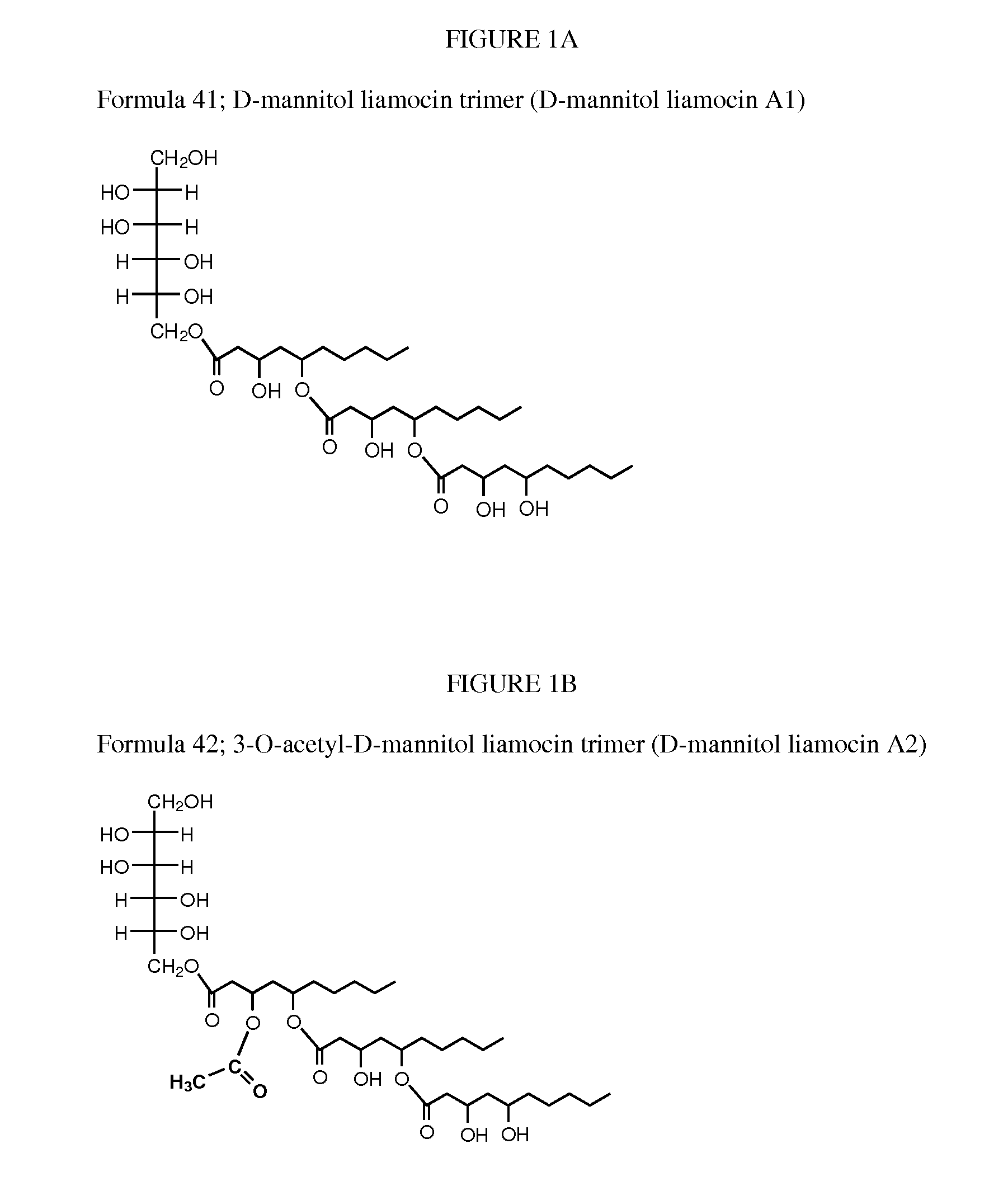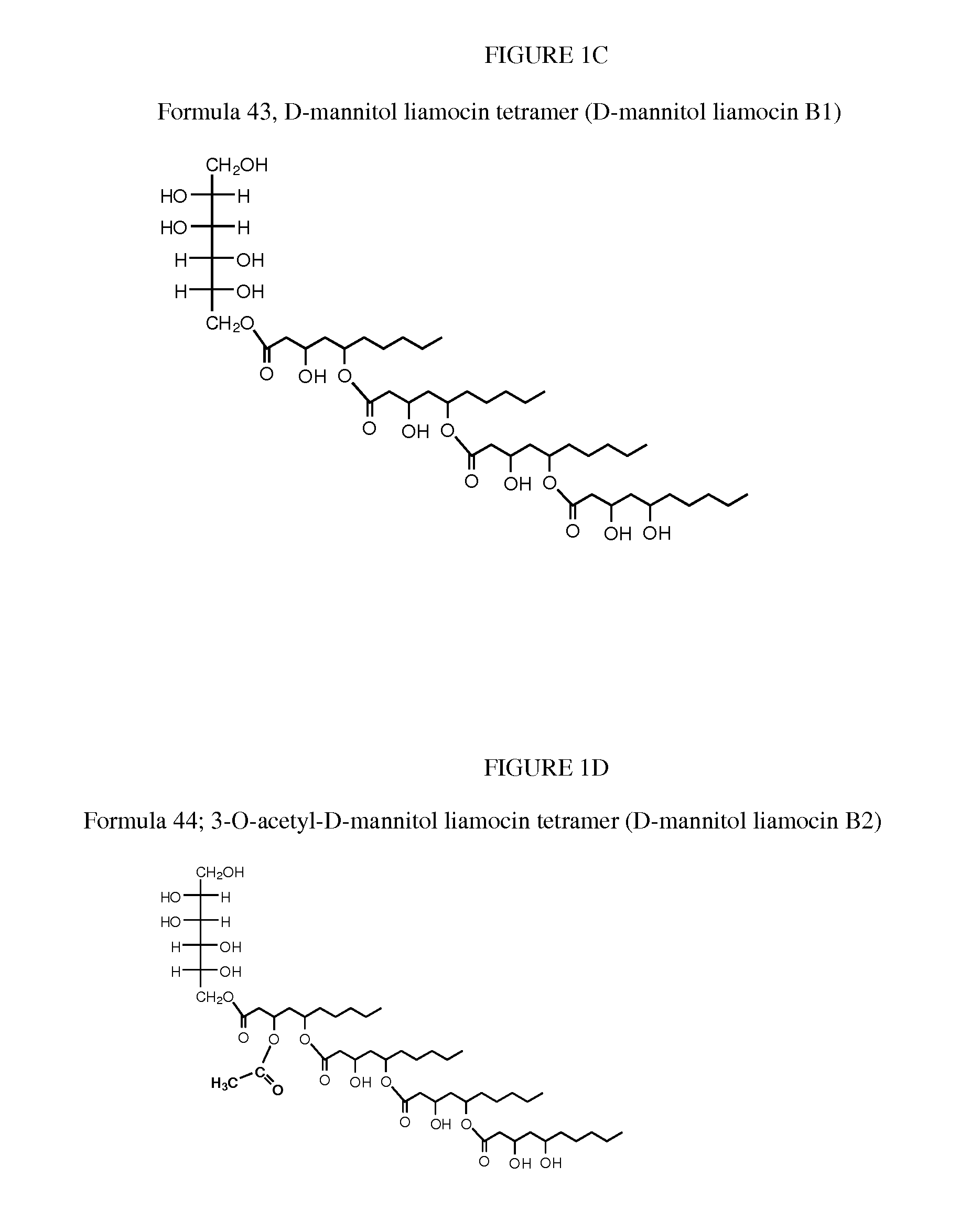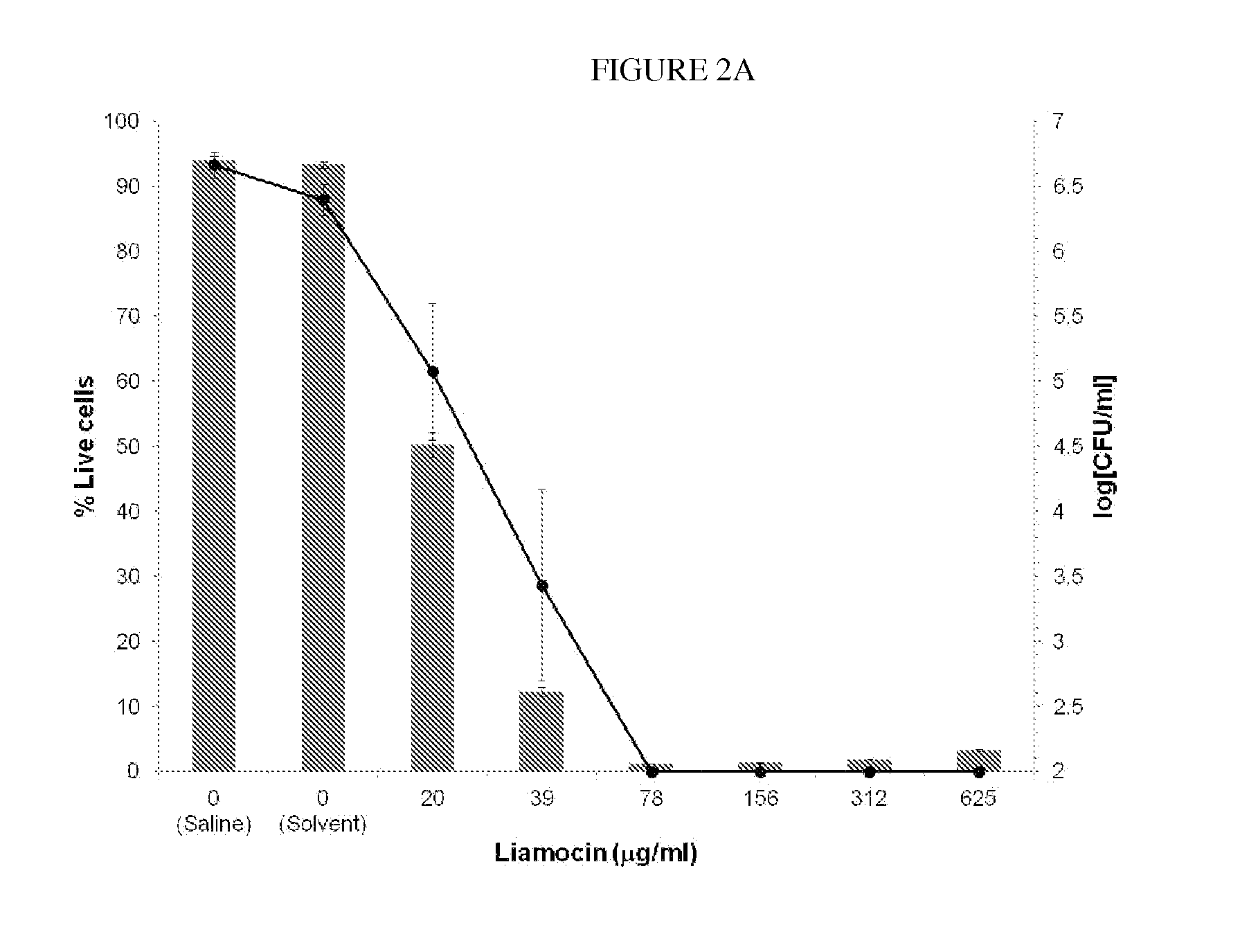Novel oils having antibacterial activity
- Summary
- Abstract
- Description
- Claims
- Application Information
AI Technical Summary
Benefits of technology
Problems solved by technology
Method used
Image
Examples
example 1
Initial Examination of A. pullulans Oil's Bactericidal Activity
[0058]Several A. pullulans strains were isolated from various habitats (e.g., leaves, painted wall surfaces and wood surfaces) and locations in Thailand using half strength corn meal agar (Difco Laboratories, Detroit, Mich.) containing 0.01% (w / v) Rose Bengal (Fischer Scientific, Pittsburgh, Pa.) between August 2005 and May 2006 (see, Manitchotpisit, et al., Mycological Res. 113(10):1107-1120 (2009); and Prasongsuk, et al., World Journal of Microbiology and Biotechnology 21: 393-398 (2005)). A. pullulans strain CU 43 (NRRL 50380) was isolated from a leaf of Cassia fistula L. (golden shower tree) in Udonthani, Thailand, in April 2006 and was deposited in ARS Patent Culture Collection, Peoria, Ill. with accession number NRRL 50380 (Manitchotpisit, et al., Biotechnol. Lett., 33(6):1151-7 (2011)). Based on sequence analysis, A. pullulans strain CU 43 (NRRL 50380) is in phylogenetic clade 8. Its culture color is yellow, and t...
example 2
Streptococcus Spp. Susceptibility to A. pullulans Oil
[0067]S. agalactiae (gift from D. Donovan, ARS, USDA, Beltsville, Md.), S. agalactiae ARS Culture Collection Accession Number NRRL B-1815, S. uberis (gift from D. Donovan, ARS, USDA, Beltsville, Md.), S. mitis ARS Culture Collection Accession Number NRRL B-14574, S. infantarius ARS Culture Collection Accession Number NRRL B-41208, S. mutans (ATCC Accession Number 25175), S. pneumoniae (ATCC Accession Number 55143), S. salivarius (Accession No. NRRL B-3714), S. suis (Accession No. ATCC 43765), and S. sobrinus ARS Culture Collection Accession Number NRRL B-4468 are grown using the protocol of Example 1 and undergo MIC assays using unpurified mannitol-liamocin containing oil obtained from A. pullulans strain CU 43 (NRRL 50380) using the protocol described in Example 1 above. MICs are determined by broth dilution method, with serial two-fold dilutions of A. pullulans mannitol-liamocin-containing oil ranging from 10 μg / ml to 1250 μg / ml...
example 3
Viability of S. agalactiae NRRL B-1815 Following 1 Hour Exposure to Oil Containing Mannitol-Liamocins
[0069]Viability of S. agalactiae following exposure to oil containing mannitol-liamocins is determined by a commercial two-color fluorescence assay (LIVE / DEAD BacLight Bacterial Viability Assay, Molecular Probes, Inc., Eugene, Oreg.) as well as by enumeration of surviving cells on agar media. S. agalactiae is grown according to the protocol of Example 1, and is chosen for this assay because it is an important agricultural pathogen, causing mastitis in cattle. Mid-log phase bacteria are suspended in sterile saline to an optical density of 0.6 at 600 nm. Oil from A. pullulans CU 43 (NRRL 50380) is obtained using the protocol in Example 1, and bacterial cells are treated with varying concentrations of mannitol-liamocin oil for 1 hour at room temperature. For the fluorescence assay, cells are stained with SYTO 9 and propidium iodide, and fluorescence intensities at 530 nm (green) and 630...
PUM
| Property | Measurement | Unit |
|---|---|---|
| Structure | aaaaa | aaaaa |
Abstract
Description
Claims
Application Information
 Login to View More
Login to View More - R&D
- Intellectual Property
- Life Sciences
- Materials
- Tech Scout
- Unparalleled Data Quality
- Higher Quality Content
- 60% Fewer Hallucinations
Browse by: Latest US Patents, China's latest patents, Technical Efficacy Thesaurus, Application Domain, Technology Topic, Popular Technical Reports.
© 2025 PatSnap. All rights reserved.Legal|Privacy policy|Modern Slavery Act Transparency Statement|Sitemap|About US| Contact US: help@patsnap.com



